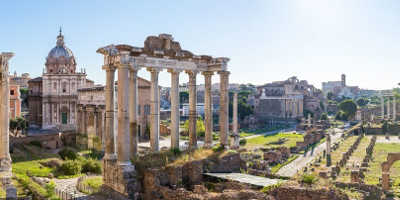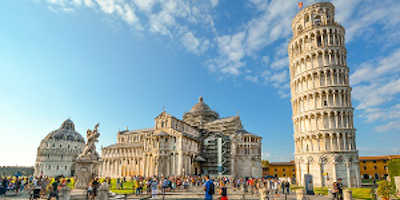What happened at the Forum in Rome?
The Forum Romanum was a showpiece back in ancient Rome, and a popular tourist attraction today. But what was the Forum used for? When was it built? And why did it fall?
The ancient ruins of the Roman Forum are one of the greatest sights in all of Italy. It depicts the past life of the Roman Empire, an ancient civilisation of one of history’s legendary empires. They were an exceptionally advanced society, with their modern engineering, architecture, and technology influencing countries well after Rome’s fall. But what actually happened in the Roman Forum?
The lives of the Ancient Romans
The Roman Empire was a powerful civilisation that ruled for nearly 1000 years, controlling a large portion of Europe. Their style of architecture is the reason why the Roman Forum still exists today. They used the classical Greek style but developed it in a way to create an entirely new way of architecture. The Roman Forum was located in the heart of the Ancient Roman city. In the centre stood the Via Sacra, which was the main street in this section of Rome. Rome was famous for their streets, as the city had the finest road system the ancient world had ever seen. The street hosted celebrations for Roman war victories, with triumphal marches strolling down the centre for citizens to applauded at. Other great monuments were located in this area, mostly religious and political landmarks. They displayed large temples right on Via Sacra, to establish the religious faith of Roman people to any newcomer. As well as political monuments including the Arch de Titus, which was built to tribute Emperor Titus following his death in 81 A.D.
The Functions of the Forum
According to ancient legend, Palatine Hill, where the Forum is located is where the brothers Romulus and Remus founded Rome in 753 BC, and where Romulus killed his brother to become king and name the city after himself. In the beginning, it is believed that the Forum functioned as a market place for the city’s small, but growing, population. A place in the centre of the city where people could come and go with their goods. Overtime, the area became much more versatile and functional, with public affairs being held on the hill. Historian’s estimate that the rise of public events at the Forum coincided with the beginnings of the Roman Republic, which took place in around 500 BC. As the population grew and Rome became more powerful, naturally, so did the Forum. Being the centre of the Eternal City, emperors expanded and developed it, adding more space along with statues, arches, basilicas and other constructions. It’s uses where multi-purpose, but mainly revolved around public affairs, including elections, public speeches, criminal trials, religious ceremonies, educational events and even gladiator matches (this was before the Colosseum was built).
The Forum’s Buildings
The Forum itself is not one large building, but a site made up of several government structures, the remains of which can still be seen today, despite it being plundered following the fall of the Roman Empire. To gain a better understanding of the Forum and its importance, we have put together the most well-known and important structures in the Roman Forum. Such as, the Senate House, also known as the Curia. It served as the council house for the Roman Senate and a site for various political events. Other buildings within the Forum were dedicated to Gods, as well as for men, including the Temple of Saturn. Considered one of the earliest buildings on the site, the temple was dedicated to Saturn, the god of agriculture, and was also used as a treasury, to keep Rome’s money safe, looked over by the gods. Similarly, the Temple of Vesta was dedicated to the Vesta, the goddess of the hearth, the home and domestic life. This was very important to Roman society, a happy home was a happy Empire. This is where the Vestal Virgins resided, whose duty it was to keep the hearth of Rome burning. As you can see, the Forum was made up of several significant buildings which together made one significant site that now offers an insight into this ancient civilisation.
How the Forum fell
As the Roman Empire developed and expanded as the did city, and many of the events once held at the Forum were moved to more elaborate structures. The gladiator battles, for example, were held in the Colosseum, becoming a popular past time and spectacular event. Then, in 410 AD, the most ancient buildings and sites in the Forum were destroyed, largely as a result of the failing Empire. The Roman Forum fell into complete disrepair after the fall of the Roman Empire. It was eventually used as a grassland, known in the Middle Ages as the ‘Campo Vaccino,’ translating to the Cow Field. This resulted in a large majority of the stone and marble to be extensively plundered. The restoration of the ruins did not start until the 18th century where the excavated started and continued up to this day. There are many theorised reasons why this legendary empire fell, noting that it was not just one great event, but a series of events which caused the collapse. The military decline, Government corruption and political dispute, religion, as well as the city’s economy, are all said to be reasons for the Empire’s cracks. Today, the Roman Forum is a popular tourist attractions, with excavations ongoing. In 2009, a group of archaeologists found pottery remains and good scraps around a wall that dated back to the 8th or 9th century. This just goes to show the unprecedented insight these ruins offer.
















